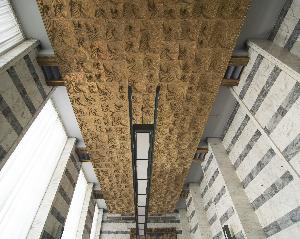Amerigo Tot
Imre Tóth;Amerigo Tot;Imre Toth
Place: Fehérvárcsurgó
Born: 1909
Death: 1984
Biography:
Amerigo Tot, also known as Imre Tóth, was a Hungarian sculptor and occasional actor born in Fehérvárcsurgó, Hungary in 1909. He moved to Rome in the late 1920s and studied in Budapest and at the Bauhaus in Germany. Tot became known for his work on the frieze in Roma Termini station in 1950 and began creating abstract works in the 1950s.
Early Life and Education
Tot was born on September 27, 1909, in Fehérvárcsurgó, Austria-Hungary. He studied under Ferenc Helbing and György Leszkovszky from 1926 until 1928, and then at the Bauhaus in Germany. As the Nazis came to power, he moved to Rome where he worked sculpting memorials on a grant from the Roman-Hungarian Academy, where he eventually became an advisor.
Career and Works
Tot first received international recognition for his work on the frieze in Roma Termini station in 1950. He began doing abstract works in the 1950s. He returned home to Hungary several times, including 1937, 1939, and 1969, in what was a carefully-prepared trip by the Hungarian communist culture-buro. In Hungary, he was celebrated as a "world famous" artist and had big exhibitions. Tot did traditional works, including a Madonna sculpture in his native Fehérvárcsurgó, as well as abstract sculptures and public monuments, including Microcosm in Macrocosm (a tribute to Béla Bartók), His Majesty, and The Kilowatt in Kecskemét. The Amerigo Tot Museum in Budapest is named after him.
Film Career
In the 1960s and 1970s, Tot made small appearances in films. He is perhaps best-known to English-speaking audiences for his role as Bussetta, Michael Corleone's bodyguard and executioner of Johnny Ola in The Godfather Part II. According to George S. Larke-Walsh, Tot's character in the film had to be brutal so that Michael's authority was retained. Tot also appeared in The Most Beautiful Wife and Pulp (1972).
- Amerigo Tot: A Hungarian sculptor and occasional actor.
- Amerigo Tot: Wikipedia page.
- The Museum Szépmûvészeti Múzeum: Introduction to the museum.
Tot died in Rome in 1984. He is interred in the Farkasréti Cemetery in Budapest. The Amerigo Tot Museum in Budapest is a testament to his legacy, and his works can be found in various museums and collections around the world, including the Museum of Fine Arts in Budapest.

